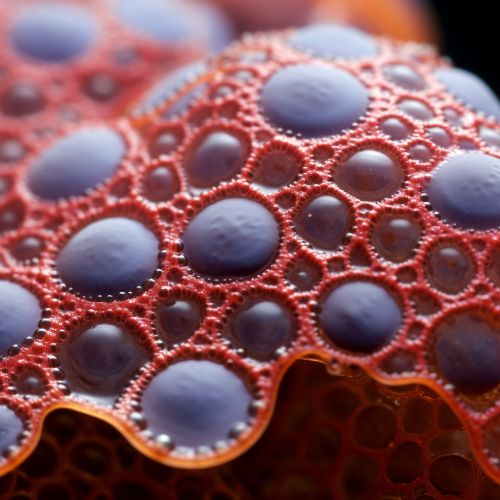Morula
Introduction
The Morula is a stage in the embryonic development of most animals. This stage is characterized by a solid ball of cells, typically 16 or more, resulting from the division of a fertilized egg. The term "morula" is derived from the Latin word for mulberry, a fruit to which the morula bears a resemblance.
Development
The morula stage follows the cleavage stage, during which the fertilized egg divides without growth, creating a cluster of identical cells. This process is known as mitosis, a type of cell division that results in two daughter cells each having the same number and kind of chromosomes as the parent nucleus.


The cells of the morula are called blastomeres and are all contained within the zona pellucida, a glycoprotein layer surrounding the ovum. As the blastomeres continue to divide, they become tightly packed together, a process known as compaction. This compaction is crucial for the cells to communicate and differentiate into two distinct cell types, which will eventually form the blastocyst.
Cell Differentiation
Cell differentiation in the morula is a critical process that leads to the formation of the inner cell mass (ICM) and the trophectoderm (TE). The ICM will eventually form the embryo, while the TE will form the placenta and other supporting tissues needed for fetal development in mammals.
The process of differentiation is regulated by various gene expression pathways, including the Hippo and Notch pathways. These pathways are responsible for determining cell fate and maintaining the balance between cell proliferation and apoptosis, or programmed cell death.
Morula in Different Species
The development and characteristics of the morula can vary between species. In mammals, the morula stage typically occurs within four days after fertilization. In humans, the morula reaches the uterus around three to four days post-fertilization, where it will continue to develop into a blastocyst.
In other species such as birds and reptiles, the morula stage does not occur. Instead, these species undergo meroblastic cleavage, where the egg does not divide completely. This results in a disc of cells, rather than a spherical morula.
Clinical Significance
The morula stage is of particular interest in the field of assisted reproductive technology (ART). In vitro fertilization (IVF) procedures often involve the culture of embryos to the morula or blastocyst stage before transfer to the uterus.
The development of the embryo to the morula stage can provide valuable information about the embryo's viability and potential for successful implantation. However, the culture of embryos to this stage in vitro can be challenging and requires optimal culture conditions.
